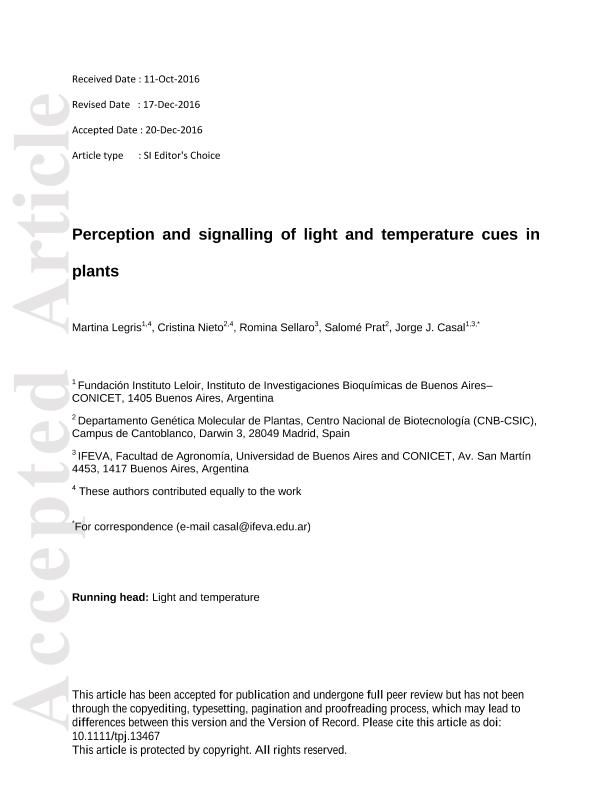Artículo
Perception and signalling of light and temperature cues in plants
Fecha de publicación:
23/05/2017
Editorial:
Wiley Blackwell Publishing, Inc
Revista:
Plant Journal
ISSN:
0960-7412
Idioma:
Inglés
Tipo de recurso:
Artículo publicado
Clasificación temática:
Resumen
Light and temperature patterns are often correlated under natural plant growth conditions. In this review, we analyse the perception and signalling mechanisms shared by both these environmental cues and discuss the functional implications of their convergence to control plant growth. The first point of integration is the phytochrome B (phyB) receptor, which senses light and temperature. Downstream of phyB, the signalling core comprises two branches, one involving PHYTOCHROME INTERACTING FACTOR 4 (PIF4) and the other CONSTITUTIVE PHOTOMORPHOGENIC 1 (COP1) and ELONGATED HYPOCOTYL 5 (HY5). The dynamics of accumulation and/or localization of each of these core signalling components depend on light and temperature conditions. These pathways are connected through COP1, which enhances the activity of PIF4. The circadian clock modulates this circuit, since EARLY FLOWERING 3 (ELF3), an essential component of the evening complex (EC), represses expression of the PIF4 gene and PIF4 transcriptional activity. Phytochromes are probably not the only entry point of temperature into this network, but other sensors remain to be established. The sharing of mechanisms of action for two distinct environmental cues is to some extent unexpected, as it renders these responses mutually dependent. There are nonetheless many ecological contexts in which such a mutual influence could be beneficial.
Archivos asociados
Licencia
Identificadores
Colecciones
Articulos(IFEVA)
Articulos de INST.D/INV.FISIOLOGICAS Y ECO.VINCULADAS A L/AGRIC
Articulos de INST.D/INV.FISIOLOGICAS Y ECO.VINCULADAS A L/AGRIC
Citación
Legris, Martina; Nieto, Cristina; Sellaro, Romina Vanesa; Prat, Salomé; Casal, Jorge José; Perception and signalling of light and temperature cues in plants; Wiley Blackwell Publishing, Inc; Plant Journal; 90; 4; 23-5-2017; 683-697
Compartir
Altmétricas




